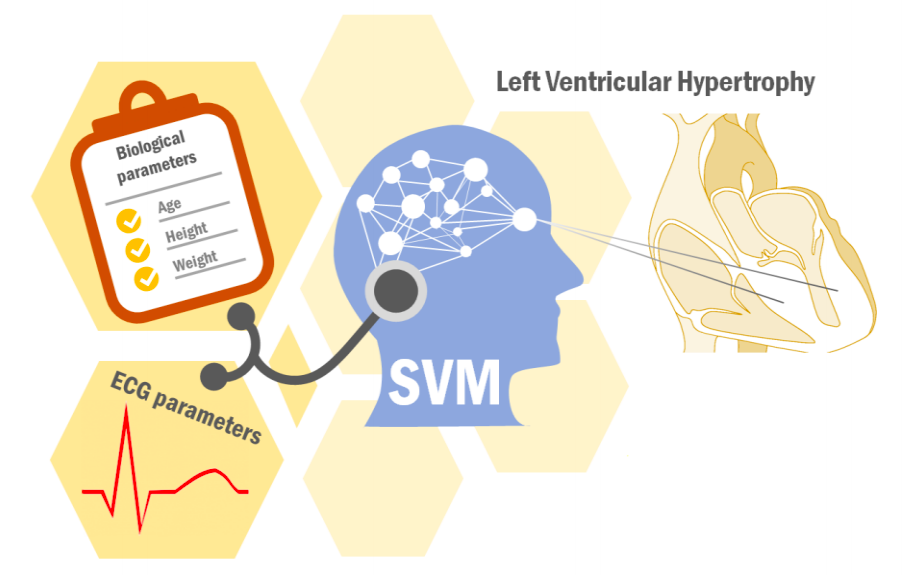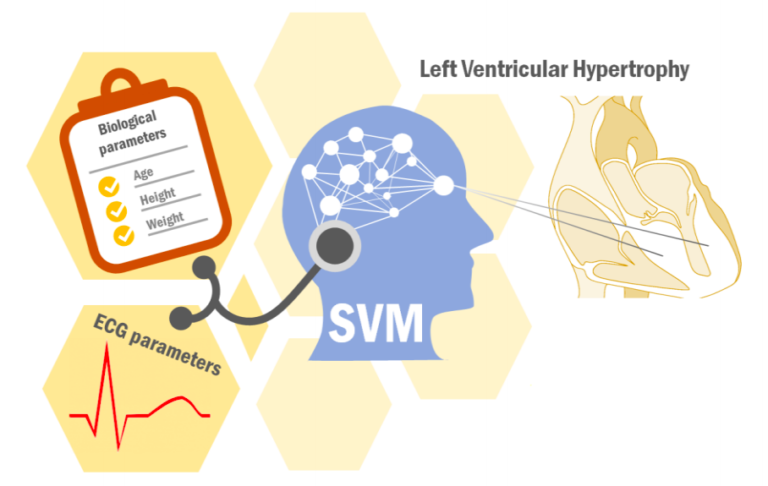
The prevalence of physiological and pathological left ventricular hypertrophy (LVH) among young adults is about 5%. A use of electrocardiographic (ECG) voltage criteria and machine learning for the ECG parameters to identify the presence of LVH is estimated only 20-30% in the general population. The aim of this study is to develop an ECG system with anthropometric data using machine learning to increase the accuracy and sensitivity for a screen of LVH. In a large sample of 2,196 males, aged 17-45 years, the support vector machine (SVM) classifier is used as the machine learning method for 31 characteristics including age, body height and body weight in addition to 28 ECG parameters such as axes, intervals and voltages to link the output of LVH. The diagnosis of LVH is based on the echocardiographic criteria for young males to be 116 gram/meter2 (left ventricular mass (LVM)/body surface area) or 49 gram/meter2.7 (LVM/body height2.7). On the purpose of increasing sensitivity, the specificity is adjusted around 70-75% and all data tested in proposed model reveal high sensitivity to 86.7%. The area under curve (AUC) of the Precision-Recall (PR) curve is 0.308 in the proposed model which is better than 0.109 and 0.077 using Cornell and Sokolow-Lyon voltage criteria for LVH, respectively. Our system provides a novel screening tool using age, body height, body weight and ECG data to identify most of the LVH among young adults. It provides a fast, accurate and practical diagnosis tool to identify LVH.

